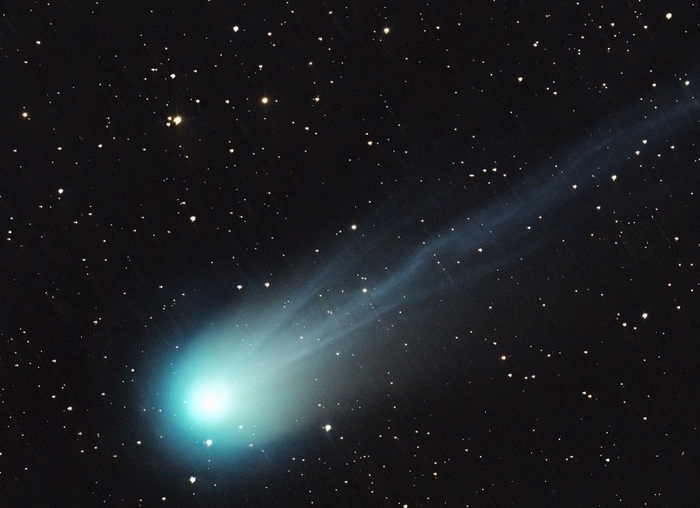A gigantic comet is on its way to us - it is the largest celestial body that has ever entered our solar system.
How close does it come to the earth?
Philadelphia - In June, researchers made an incredible discovery: A “mega comet” is heading straight for our solar system *. The celestial body was recorded for the first time between 2014 and 2018 during an international systematic sky survey as part of the “Dark Energy Survex” project. University of Pennsylvania researchers Pedro Bernardinelli and Gary Bernstein recently rediscovered the comet. Pure coincidence, because the American scientists were actually looking for objects whose orbits lie beyond the orbit of Neptune.
The two scientists and their team have been researching the gigantic comet for months.
What they found is astonishing: According to the research results that the scientists have now published in the specialist magazine "New Scientists", comet 2014 UN271 could be the largest celestial body that has ever entered our solar system.
“Mega Comet” 2014 UN271 is heading for our solar system - a diameter of 150 kilometers
In their search for the objects, the American researchers found around 800 celestial bodies - among them the mega-comet mentioned above was noticed because of its immense size. According to the latest findings, the diameter of the comet should be up to 150 kilometers, reports
iflscience.com
. The first research results for 2014 UN271 were still imprecise, originally it was assumed to be around 370 kilometers in diameter. The scientists have now corrected this information. The comet is still gigantic: It is a thousand times larger than a typical comet and at least ten times larger than the giant comet "Hale-Bopp" discovered in 1995. Another celestial body was discovered a few years ago. An astrophysicist from Harvard is certain that it was an alien satellite *.
In their research, Pedro Bernardinelli and Gary Bernstein also recorded the comet's orbit.
The mega-comet last approached the sun 3.5 million years ago.
At that time, however, it only came within 18 astronomical units of the sun, which is almost twice as far as the distance it will reach this time, and roughly the same as the distance to Uranus.
"2014 UN271": Gigantic comet will reach our solar system in ten years
According to calculations, the comet will soon come closer to the sun and thus also to the earth than ever before: in January 2031 it will reach its closest point to the sun and will also pass close to the orbit of Saturn.
However, amateur astronomers will probably not be able to see the comet with the naked eye. It is assumed, however, that UN271 should have a brightness of around magnitude 9 at its brightest point - so it would be visible to amateurs with small telescopes. But the weather in Germany * has to play along for a sighting of the comet. It is different with another phenomenon: A falling star rain was only seen in August *.
According to the current state of research, it is not yet clear whether the mega-comet could be dangerous for the earth.
“It is usually a hopeless endeavor to speculate about the future behavior of comets,” says the research article.
Some astronomers are
very interested in starting a mission to UN271
, according to
iflscience.com
.
They anticipate the best time to fly by is 2033, which would require a launch by 2028.
*
bw24.de
is an offer from IPPEN.MEDIA
.
List of rubric lists: © M. Kornmesser









/cloudfront-eu-central-1.images.arcpublishing.com/prisa/KMEYMJKESBAZBE4MRBAM4TGHIQ.jpg)


/cloudfront-eu-central-1.images.arcpublishing.com/prisa/EXJQILQR5QI7OMVRTERD7AEZAU.jpg)
